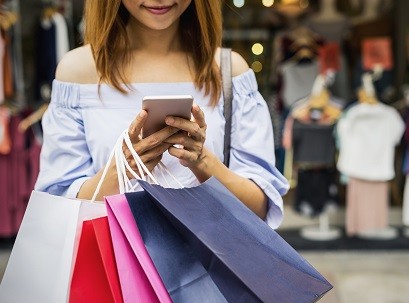Written by Brian Walker, CEO and Founder: Retail Doctor Group
“Consumers have a different path to purchase. They don’t shop less than they used to; it is just that the footsteps went online. You have to think differently in how you engage with users.”
– Margo Georgiadis
Is consumer behaviour changing as dramatically as reported, or are people just changing certain shopping habits?
The past Christmas trading season may provide more insight into this question, especially as reports are coming out that physical foot traffic was in slight decline compared to the previous two Christmas trading periods.
An important observation to make is that the vast majority of consumers are going online not necessarily to buy, but rather to research purchases they later intend to make in a physical shop and to draw up their short list of visits accordingly.
This is key to understanding the primary role of online and its current relationship to physical retailing.
The first thing to note is that having an online site is limiting if it only serves online sales. Hence, the move by many pureplay online retailers, from Amazon to Catch Group, to engage with physical spaces. The human need to enquire, talk, socialise, be inspired, hold the product and be heard is at the heart of physical retailing and that won’t change for speciality goods retailing. However, the way in which customers understand and ultimately select a retail business is changing exponentially.
Despite the mammoth numbers of online traffic, the conversion of interest or enquiry into sales is only between 2 per cent to 4 per cent (excluding online marketplaces where special prices dominate), whereas physical specialty retail enjoys conversion rates of between 24 per cent to 28 per cent.
These numbers shed light on another factor influencing physical shop purchases. Consumers, broadly speaking, are armed with significantly more knowledge and research before they make a purchase, and they are more time-constrained. Browsing is occurring online, while more informed, or at least more involved, consumption is being done in the physical arena. This supports our view that consumers, over the Christmas trading period, were not as random in their visits to malls as in the past.
Not a lot has been said about product differentiation strategies across channels, but as consumers migrate from browsers to hunters, featuring products consistently and coherently across channels is important. The old retailing adage that product is king, or queen, is even more relevant going forward.
In fact, Forrester’s 2018 Retail Best Practices: Mobile Web study found that smartphones were used at some point in the buying journey in over one third – or more than US$1 trillion – of total US retail sales in 2018, including for research, price comparisons and purchases.
Our research shows that 52.2 percent of all website traffic worldwide was served to mobile phones in 2018, up from 50.3 percent in 2017. This is skewed significantly to sub 45-year olds and is growing rapidly.
Equally, our friends at Google tell us that 82 per cent of smartphone shoppers conduct ‘near me’ searches with over 90 per cent of survey respondents saying they are likely to click on the first set of results. As pre-planned destination shopping becomes more focused, pressure on physical retail space will increase and footprints will decrease accordingly.
So, what can we glean from these observations?
- The majority of physical shop purchases will increasingly begin or at least be influenced by online search, and this will predominately occur on mobile.
- The relationship with physical shopping is increasingly dependent upon an online interface and vice versa.
- The synergy between online and in-store visual treatment, such as windows, needs to be aligned.
- Product heroes will make a comeback as the central features of this ecosystem alignment.
- Mobile sites are now mandatory, but simply focusing on online sales conversion misses the point. You need to link online to the choice of a physical environment.
The relationship between online and physical retailing is far more kaleidoscopic than the lineal interpretation that online visits lead to online sales and physical visits lead to physical sales. That is so 2018.


